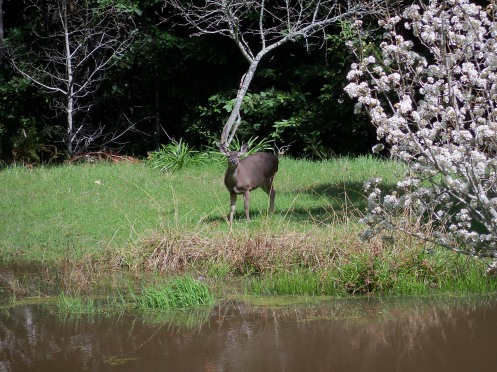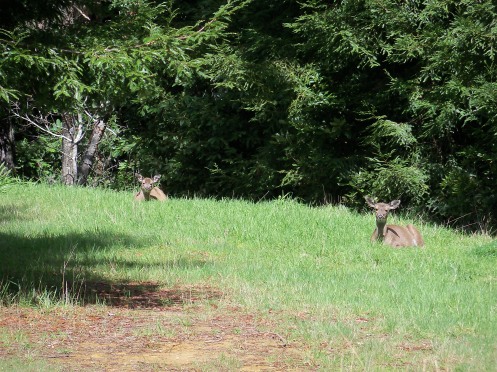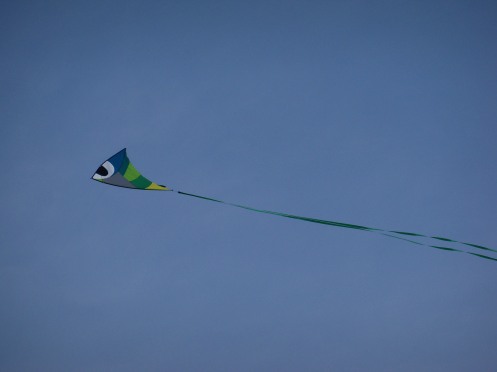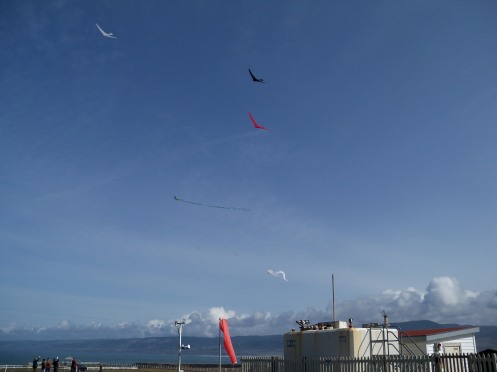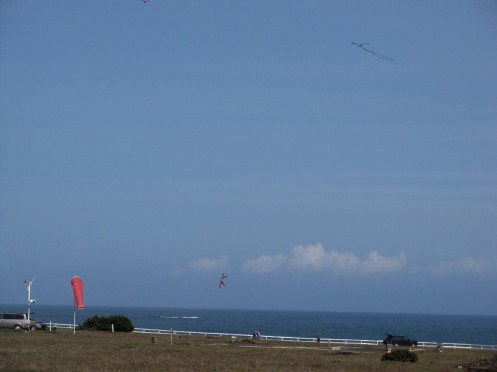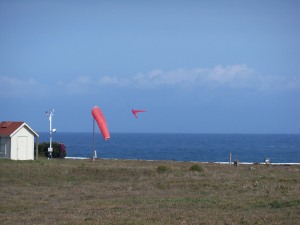[note: this is a developing article; upon completion this notice will be deleted.]
The basic or generic meditation practice throughout a variety of traditions initially entails concentrating one’s awareness on a single “object”, with seemingly the most often referenced object recommended to use being one’s own full breathing cycle.
The point in doing that is for the cultivation of both a deep “calm abiding” and a lucid, clear-headed wakefulness that simply, non-reactively, and without “conceptual elaborations” observes the rising and passing of thoughts, perceptions, emotions, sensations, etc.
If finding oneself starting to be distracted from abiding or resting in this calm wakefulness, when becoming absorbed in, or entranced by, the stream of thoughts, etc (including thought chatter commenting in reaction to our sense perceptions), the practice is to simply return attention to the single object of attention.
If that is the breathing cycle, the most widely taught way seems to be to focus on feeling the breathing fully throughout the whole body rather than a focus on the sensation of air going in and out at the tip of the nostrils (which some teachers suggest). Another method taught is counting the breath.
On inhaling, simply feel and enjoy the sense of energy filling up and enlivening the whole body. On exhaling, enjoy the sense of emptying or dissolving into all pervasive space. In between, enjoy the thought free stillness and spaciousness.
It is traditionally rx’d that an initial position for sitting be one that is going to remain comfortable. It is important to keep the back straight to assure alertness.
Teachers typically tell beginning meditators that they may be surprised and frustrated by the level of thought chatter initially experienced in practice. Hence, the tool of single pointed concentration is basic to meditation practices.
There are a wide variety of ways that people can practice a single pointed concentration. The focus on breathing was a primary emphasis of the Buddha when teaching and this vehicle for concentration remains widely practiced and taught. But, all meditation practice traditions include so much more in the tool box. From “The Shambhala Guide to Yoga” by Georg Feuerstein, a work largely introducing the classic Yoga system as described in the primary 2000 year (estimated) old Yoga Sutra by Patanjali, page 85:
“In Yoga the voluntary stoppage of the outgoing tendencies of the mind is called dharana, meaning “holding” or concentration. Patanjali defines concentration as ‘the binding of consciousness to a [single] place’. (Yoga Sutra, 3.1). It is clear from the commentaries on Patanjali’s aphorisms that by ‘place’ is meant any focal point inside the body-mind, notably the psychoenergetic centers (or chakras) at the base of the spine, sexual organs, navel, heart, throat, forehead, and crown of the head. But the yogin may also focus his attention on a specific thought or image, or on a single sound or sound pattern, whether heard externally or internally…..”
The wide usage of mantras as a concentrative tool has become, for some time now, something fully integrated into the awareness of western cultures. Georg Feurstein in The Shambhala Guide to Yoga gives some background on the sacred and primal sound, OM or AUM, page 108-109:
“The Mandukya-Upanishad, consisting of only twelve verses, correlates the sacred syllable OM with the four states of consciousness taught in Vedanta. This ancient text begins by stating that OM is the entire universe, past, present, and future. It analyzes the sacred syllable in it’s four constituent parts: a + u + m + the soundless pause following the pronunciation of the other three constituents. Then the text goes on to correlate the letter “a” with the waking state, “u” with the dream state, and “m” with deep sleep. The fourth state, which is mere silence, is said to transcend the other three states. It is identical with the universal consciousness of the Self, which is neither inwardly aware nor outwardly aware but pure consciousness, incomprehensible, without distinctive mark, and nondual [advaita]. This Fourth is declared to be the goal of yogins.”
Another concentrative tool uses our capacity to imagine. Meditation practice systems in Hinduism, Buddhism, and Taoism in particular have very elaborate meditation practices that use visualization, and the concentrative focusing involved in that, to gather, stabilize or harmonize, and awaken energy in order to provide the necessary supportive conditions for sustaining an awakened and nondual awareness.
Closely tied to the condition or state of both our awareness and energy is breathing. There are practice systems of breathing exercises, like the fourth limb of yoga practice called pranayama, designed to calm the body and mind and further awaken our feeling connection to the energetic underpinnings of existence.
The focusing of awareness in a single pointed way is not in itself a “state of meditation”. In the classic Yoga system, with its 8 limbs, concentration is limb number 6 and meditation limb number 7. As framed in the language of the classic Yoga system, meditation begins when the sense of seperation and self conscious effort involved initially in a “subject” focusing single pointedly on an object significantly dissolves and relaxes.
Some systems have a more dissociative, inward, world denying, and dualistic orientation due to philosophical frameworks presenting the picture of Liberation as the ascent of our essence and spirit from the bondage of matter. But, the deepest and fullest enlightening realizations entail the primary awareness of “not two”. And, in fact, conceptualizing, compartmentalizing, objectifying, and characterizing
profoundly ease up in meditation and so do notions of reality as being either “spiritual” or “materialistic”. The capacity to conceptualize, etc. is not of course incapacitated by meditation and remains important in creative expression, problem solving, and more. Instead, we loosen our entanglement with the thought stream. We break the nearly chronic spell of entrancement with seemingly solid internalized pictures of what is. And, thus it is important to note that meditation is not an escape route to go somewhere else better. In fact, it has no “goals” and doesn’t involve reaching one!
Over the last several decades we have seen an incredible infusion of information regarding the deepest “secrets” related to formerly esoteric meditation practices. I found a footnote in Buddhism, A Concise Introduction by Huston Smith and Philip Novak that refers to practices (and accompanying realizations) that today are being taught with many preparatory and preliminary traditional practices no longer required for such teachings, page 216, note 5:
“Dzogchen, or “great perfection”, is one of the Vajrayana’s many practice regimes. It refers both to a comprehensive path of training and to a specific form of meditation on that path. Traditionally regarded as a culminating effort that follows years of preparation, it has in recent years been taught sooner by a number of Tibetan teachers. Because Dzogchen meditation teaches that the practitioner in some sense already is the great perfection she is working to achieve, it has been likened to the Zen doctrine of the oneness of practice and enlightenment and to shikantaza or ‘just sitting’, form of meditation associated with that doctrine. Dzogchen and shikantaza appear to be potent combinations of (1) a great effort to sustain sharp awareness and (2) a non-effort, a letting go of everything one becomes aware OF……[A] similiar strategy appears to lie at the heart of vipassana practice. Sustained awareness coupled with non reactivity seems to be the holy discovery of Buddhist psychologists, the double-edged blade that is thought to slice through every sclerosis of conditioning that lies between bondage and freedom…”
To be continued….
It is almost tax day, and here we are on some fronts:
Last month (March), stunning heat waves saw high temperature records being broken all throughout the United States…..
Mitt Romney is now the “inevitable” nominee of the Republicans. Because Rick Santorum drove the discussion to things like contraception, pushing Mitt to promoting culturally conservative stuff not his usual “thing”, Obama has a double digit lead among women (18%), is leading (according to three polls now) anywhere from 7 to 9 percent among independents in 12 swing states, has a double digit lead nationally, and right now seems on track for a landslide….
They juiced it up at CERN’s Hadron Particle Collider a few days ago and we may see confirmation of the Higgs Boson this year. Late last year, suggestive signs already had manifested…..
No signs of the Bolon Yokte yet. -:) They had more on all this last night on the History Channel’s Ancient Alien series. The Ancient Alien guys (Philip, David, Giorgio, etc) seem quite confident that the nine gods (i.e. extraterrestrials) are likely on their way. Also possibly on our way are either life changing or life ending events…..
Space X, a private space company, has a contract to deliver cargo to the space station and will be doing their first mission soon……
The Kepler satellite has discovered planets recently in the “habitable zone” around some stars……

An Occupy Ukiah strategy, etc. regular meeting on a January Saturday morning, located downtown at the plaza.
The Occupy Wall Street movement, often casually represented as a left wing version of the Tea Party Movement, began six months ago and spread through the intervening months to locations all over the country, including the little county seat city of Ukiah in Mendocino.
I am not clear on what is happening now in many locations, as the agendas in each place varies, but it seems many Occupy activists are focusing on misdeeds by banks in foreclosing on homes.
On March 12th in Ukiah about thirty Occupy activists demonstrated outside the Recorders office on Low Gap Rd. In Ukiah, not targeting the friendly and helpful folks in that office but the banks that fraudulently produced notarized statements with fake signatures, etc.
I learned this last night by watching a new show called Occupy Ukiah on the local public access channel. Host Charlie Vaughan reported on other actions being taken by the local Occupy contingent (for updates, see http://www.occupyukiah.org):
There is the campaign to oppose the expansion of the local WalMart
with the addition of what amounts to a grocery supermarket, and the hours going to 24/7, was encouraged by the Planning Commission saying no to that. The city council has the final word.
Vaughan also discussed the Move to Amend petition effort attempting to end the granting of corporate personhood and to reverse the Citizens United Supreme Court ruling allowing these so called “persons” unlimited ability to exercise their free speech by injecting tons of money into the political process through SuperPACs. This allows them to profoundly affect the upcoming political battles.
The local group is also focusing on shutting down the two remaining nuclear power plants in California. They have a petition circulating on that also, which basicly urges that we “stop using nuclear reactors to boil water” and instead invest further in clean energy production based on renewable sources.
This is the third year of a new Point Arena springtime festival. Yesterday, the City and many residents set up various activities in town…..it was somewhat drizzly then but more daffodil bulbs are flowering with each passing year and thus lighting up the sides of the roads and other places.
The Berkeley Kite Wranglers lofted many large kites the first year and last year they lofted none at all due to heavy rains for the last day, Sunday, events of this festival centered at the Lighthouse. Up until 11:30 am today, they had eight kites up for awhile, all of the smaller ones due to the light winds not allowing for lofting the heavier, and larger, kites. As I write this now, 2pm, I have not seen any pickup in winds since then (in the general area). When I was with 16 out of towners on a free tour up to the top of the Lighthouse, from 11:30 to noon, there was no wind and the kites were again laid out on the ground.
To see one of the articles I wrote at Third Eye on Reno, reporting on the first Flower Power and Daffodil Explosion festival in Point Arena in 2010, go here:
http://renothirdeye.wordpress.com/2010/03/page/3/
You can find related articles in the vicinity of that one.
A vocal contingent of Ecotopians in Mendocino County are completely convinced that the top leadership of the United States engineered the 9/11 attacks in order to justify a restriction of our liberties (through the Patriot Act) and to set the stage for attacks on Near East nations presumably with an agenda related to the oil flowing from that region. Even though they represent a minority point of view here, they unreservedly give voice to this notion almost with the same fervor that old Israeli prophets exhibited. (One of the primary stages where this is given voice is a county email discussion listserv.)
The growing prevalence of paranoiac and deluded conspiracy theories is something being seen across this continent, as fear grows over destabilizing events worldwide and profound economic uncertainty. In this and other regions of the continent there are unusually strong signs of a desire to breakaway from the current political order. As observed in the first dispatch from Ecotopia, there is a growing impulse to de centralize the sources of economic and political power.
The best chronicling of happenings in Ecotopia occurs in the pages of
the weekly Anderson Valley Advertiser and in today’s edition I noticed a much more positive break away sign emerging. From editor Bruce Anderson’s Off the Record news column:
“Dave Smith, owner of Mulligan Books in Ukiah writes, ‘We need a zillion new family farms and gardens in this country, and we need to fill the Ukiah Valley with them to come through the challenging times ahead. It all starts with seeds. Sadly, one of the dirty little secrets of the organic seed trade, and the seed trade in general, is that many organic seeds now being offered to gardeners are grown by
giant transnational corporations in China and India. Mulligan Books and Seeds in Ukiah is partnering with Sustainable Seed Company in Covelo, Laughing Frog Farm in Laytonville and other seed growers to
localize seed breeding, growing, saving, and trading in Mendocino County with seeds adapted to our particular soils and climate, saving you money and providing a more secure local food program……As one of the very few counties in the US [okay, Ecotopia is till formally a part of US] that has banned GMO plants, our seeds will be cleaner, safer, and cheaper as we localize their production….'”
Community blog hosted by Dave Smith:
http://ukiahcommunityblog.wordpress.com
Bruce Anderson and the Anderson Valley Advertiser:
Standing on the grounds of old Mayan ruins in Palenque, where the famous sarcophagus of the great 7th century leader was discovered, author David Childress (a regular on the Ancient Alien show) described features of the intricate carvings on the lid of Pakal’s sarcophagus and exclaimed: “He was the original rocket man!”
On the evening of February 17th, a new season of Ancient Alien shows on the History Channel began with an examination of ancient Mayans by a now familiar group of guys known as advocates of the notion that extraterrestrials hundreds and thousands of years ago interacted with humans here and even played a key role in human development of civilization, technology, and scientific knowledge.
One of the regular guests in this show is Erich Von Daniken who, along with other more contemporary authors and ET pundits on this show, described how they interpret the carvings on the lid. This excerpt from the wikipedia article on “Ancient Astronauts” provides a good summary of the description they shared on the show:
“Erich von Däniken’s ‘Maya Astronaut’
Pakal’s tomb has been the focus of attention by some “ancient astronaut” enthusiasts since its appearance in Erich von Däniken’s 1968 best seller, Chariots of the Gods?. Von Däniken reproduced a drawing of the sarcophagus lid (incorrectly labeling it as being from “Copan”) and comparing Pacal’s pose to that of 1960s Project Mercury astronauts, interpreting drawings underneath him as rockets, and offering it as evidence of a supposed extraterrestrial influence on the ancient Maya.
In the center of that frame is a man sitting, bending forward. He has a mask on his nose, he uses his two hands to manipulate some controls, and the heel of his left foot is on a kind of pedal with different adjustments. The rear portion is separated from him; he is sitting on a complicated chair, and outside of this whole frame, you see a little flame like an exhaust.
Von Däniken’s claim is not considered a credible interpretation by any professional Mayanist. For example Ian Graham responded, ‘Well, I certainly don’t see any need to regard him as a space man. I don’t see any oxygen tubes. I see a very characteristically drawn Maya face'[3]”
But, here is how scholars see it (as summarized in the wikipedia article on Pakal):
“The large carved stone sarcophagus lid in the Temple of Inscriptions is a famous piece of Classic Maya art. The widely accepted interpretation of the sarcophagus lid is that Pakal is descending into Xibalba, the Maya underworld. Around the edges of the lid are glyphs representing the Sun, the Moon, Venus, and various constellations, locating this event in the nighttime sky. Below him is the Maya water god, who guards the underworld [4]. Beneath Pakal are the “unfolded” jaws of a dragon or serpent, which Pakal is escaping from, ascending towards the world tree. This is a common iconographic representation of the entrance to the underworld. Other examples of this imagery are found in sculpture on Monument 1 “El Rey” and Monument 9 at the Olmec site of Chalcatzingo, Morelos, on Altar 4 at the Olmec site of La Venta, Tabasco, and in recently discovered murals at the Late Preclassic Maya site of San Bartolo, Guatemala.”
The ancient alien theorists assert that ancient peoples commonly misinterpreted the intervening extraterrestrials, utilizing such an awesome technology, as gods. But, that certainly isn’t something that scholars of religious history and development see. For example, here is Karen Armstrong in her “A History of God” (pg 5):
“….The numinous power was sensed by human beings in different ways–sometimes it inspired wild, bacchanalian excitement; sometimes a deep calm; sometimes people felt dread, awe and humility in the presence of the mysterious force inherent in every aspect of life. When people began to devise their myths and worship their gods, they were not seeking a literal explanation for natural phenomena. The symbolic stories, cave paintings and carvings were an attempt to express their wonder and to link this pervasive mystery with their own lives; indeed, poets, artists and musicians are often impelled by a similar desire today. In the Palaeothic period, for example, when agriculture was developing, the cult of the Mother Goddess expressed a sense that the fertility which was transforming human life was actually sacred. Artists carved those statues depicting her as a naked, pregnant woman which archaeologists have found all over Europe, the Middle East and India. The Great Mother remained imaginatively important for centuries. Like the old Sky God [my note: felt and seen as an impersonal and aloof force], she was absorbed into later pantheons and took her place alongside the older deities. She was usually one of the most powerful of the gods, certainly more powerful than the Sky God, who remained a rather shadowy figure…..These myths were not intended to be taken literally, but were elusive to express in any other way. These myths were not intended to be taken literally, but were metaphoric attempts to describe a reality that was too complex and elusive to express in any other way. These dramatic and evocative stories of gods and goddesses helped people to articulate their sense of the powerful but unseen forces that surrounded them.”
The History Channel airing this past Friday night focused very little on addressing signs in the Mayan culture that might shed light on what is going to happen at the end of the long count calendar near the end of the year. Only briefly, near the end of the show, did they discuss the sole known inscription that references what will happen. Acknowledging the missing fragment on the lower right side, the translation they offered, “the descending of nine gods”, is essentially in line with what we noted in the first article at this blog, where the Bolon Yokte (nine underworld gods) is predicted to return on December 21st.
One of the regular guests on this show is author Philip Coppens and I thought this excerpt from his online article, “The Return of the Nine”, was a great discussion of the inscription found at an ancient Mayan site in Mexico:
“The Mayan prophecy to do with 2012 was that it would signal the return of ‘The Nine’.
The Nine was mentioned in an inscription on Monument 6 of the Mayan site of Tortuguero in the Mexican state of Tabasco. The Monument was erected in 669 AD and is one of the very pre-Conquest sources that mention 2012. Various translations or partial translations of the inscription exist.
This is the most common one: At the next creation, the Bolon Yokte Ku, or Nine Support Gods, will return.
However, the actual word ‘return’, sometimes translated as ‘descent’, is not intact on the monument.
….Mayan sources reference the return of these deities at the ending of each baktun [one of the Mayan calendars, a few hundred years I. length]. Hence, they are expected to emanate on Earth in 2012 too.
Who are the Bolon Yokte Ku–the Nine? They have been variously translated as the God of Nine Strides, the Nine-Footed God, Jaguar-Foot-Tree and Nine-Dog-Tree.
They were seen as living in the Underworld and were generally described as god(s) of conflict, warfare, and are linked with dangerous transition times, social unrest, eclipses, and natural disasters like earthquakes.
It is said that at the end of a baktun, they would abandon their underworld realm and rise to the Earth’s surface, where they would do battle with the 13 deities of Heaven.
……[The] Nine Gods appeared during ceremonies that were held at the end of each baktun, the last of which occurred in 1618 AD.
The ceremonial of the baktun is described in Chapter 29 of The Book of Chilam Balam de Chumayel, a Mayan chronicle. It provides a detailed description of the ceremonies that were performed in Merida in 1618, at the end of [the last or 12th baktun]. In total there are twenty acts, each representing one of the twenty katuns that make up a baktun cycle:
~after some initial preparations, in act 2, the bee god tied the masks of the 13 gods of Heaven to those people who were going to perform in the ceremonies.
~the actual baktun cycle was ended in act 3, whereby the Nine Gods fought, conquered and sacrificed these 13 gods. Night had conquered day.
~the subsequent acts involved rituals to do with the election of the new officials for the new period, which in act 12, the nine gods sacrifice the Seven Pacers and count the mats, which is an initial line-up of the candidates for investiture for the coming era.
~in act 13, the 4 year-bearers reappear, in the guise of the four death gods.
~most importantly, in act 15, the nine gods announce the fate of the new era. This fate was largely the will of the gods, which the community had to achieve during the new era.”
Philip Coppens and many others connect all of this to similar patterns and cultural ways worldwide, something for this blog to further examine over the span of this year. What they are suggesting, in a nutshell, is the possible return os extraterrestrials who have had a guiding hand in our affairs.
Coppens’ essay can be read in full here:
Even Republican leaders and pundits have called the Republican battle for the party’s nomination for President a “clown show”.
The national head to head polls now show Rick Santorum slightly ahead of Mitt Romney in his childhood state of Michigan, a state he was expected to win with ease. Conservatives have a hard time in accepting Romney as they see his prior record and statements and, upon hearing what he is saying now, conclude that he is not really one of them.
People are doing the math for the remaining hunt for delegates and odds seem to be increasing for a brokered and open convention with perhaps a late entry into the race. This has not happened for a really long time.
With the economy improving and our involvement in Afghanistqn winding down and so many other factors, the polls are showing Obama with a comfortable lead nationally as well as in ten of the eleven swing states.
This is the first article filed under Dispatches from Ecotopia, a mythical nation state profiled in Ernest Callenbach’s 1975 novel Ecotopia-the novel of your future (which is set in 1999). It just so happens that I live in the heart of the setting for this novel, a place where many of the societal features portrayed in the novel have actually come to life. The overall region is commonly noted as “cutting edge” or where major new cultural developments and changes first surface. So, in a blog examining such notions (as some southwest Indian cultures have proposed) of a pending transition from a fourth world culture/civilization to a new fifth one with new ways, it seems logical to me that possible clues as to what this Fifth World Culture might look like would be perhaps evident first in my current backyard.
In “Ecotopia” a reporter from a newspaper in the United States is allowed full access to this new country from where he sends dispatches of what he is observing, experiencing, and thinking. William Weston decides in the end to stay in this region, sheltered on purpose for years after seceding from the United States of America.
Here is a portion from Weston’s June 19th report filed from San Francisco:
“Where is Ecotopia going in the future? After more than six weeks’ intensive study of the country, I find it still hazardous to guess. There is no doubt, I have been forced to conclude, that the risky social experiments undertaken here have worked on a biological level. Ecotopian air and water are everywhere crystal clear. The land is well cared for and productive. Food is plentiful, wholesome, and recognizable. All life systems are operating on a stable-state basis, and can go on doing so indefinitely. The health and general well-being of the people are undeniable. While the extreme decentralization and emotional openness of the society seem alien to an American at first, they too have much to be said in their favor. In these respects, I believe, Ecotopia offers us a difficult challenge, and we have far to go to even approach their achievements.
On the other hand, these benefits have been bought at a heavy cost. Not only is the Ecotopian industrial capacity and standard of consumption markedly below ours, to a degree that would never be tolerated by Americans generally, but the Ecotopian political system rests on assumptions that I can only conclude are dangerous in the extreme…………
Under Ecotopian ideas, the era of the great nation-states, with their promise of one ultimate world-state, would fade away. Despite our achievements of a worldwide communications network and jet travel, mankind would fly apart into small, culturally homogenous groupings….
Ecotopians argue that such separatism is desirable on ecological as well as cultural grounds—that a small regional society can exploit it’s “niche” in the world biosystem more subtly and richly and efficiently (and of course less destructively) than have the superpowers……
[Amusingly, reporter Will Weston notes in a personal diary entry, “blah, blah, blah. Can hardly bear to re read that last column. They’ll probably love it in New York. Real “objective” pseudo-think, trying to conclusions at any cost…]”
Today, decades after this novel was written, federal attorneys in California districts have warned Mendocino County officials that they face prosecution over a system where medical marijuana patients can form grower cooperatives allowing large, 99 marijauna plant gardens, in exchange for fees that go into the Sheriff’s department. While the federal government now has a policy allowing people to obtain and use marijuana as medicine, so long as they comply with state laws, the federal attorneys obviously thought the Mendocino system was a bit much with all this money involved. The Board of Supervisors ended this system in response to the threat and returned to the old one of allowing 25 plants per parcel, no money now going to the Sheriff.
In 2004, Mendocino clearly demonstrated that it is the heart of Ecotopia, a country with a fully green/countercultural orientation, when it’s voters banned genetically engineered crops and seeds, telling Monsanto to get lost in effect. $700,000 was spent to get voters to vote otherwise. With 3300 counties nationwide, Mendocino stood alone in taking this measure and braced for a fight with one really big bully.
There are only about 88,000 people living in Mendocino, which has around 3500 square miles of land and 380 of water. That is 25 people per square mile. Median income is below national averages.
The wikipedia article on Mendocino notes:
“The county is noted for its distinctive Pacific Ocean coastline, Redwood forests, wine production, microbrews, and liberal views about the use of cannabis and support for its legalization. It is estimated that roughly two-thirds of the economy is based on the cultivation of marijuana.[1]”
What interests me about this county (in the context of this blog) are what clues are here in the unique culture geography of Mendocino for emerging cultural, economic, and political models that may significantly reshape the lives of future generations.
One thing that I think I am beginning to see more and more is a real desire and movement to de centralize in the way Will Weston described above.
A poorer county than most, with little industry, extravagant consumption (very typical in urban and suburban areas) is not so evident here. Sadly, government services, including the ability of the Sheriff to provide protection in all corners, gives the scene here a much more primitive feel than most.
Secession? While that is not a looming reality, this county feels so sheltered and cut off in some ways that we might as well be divorced from the United States of America.

